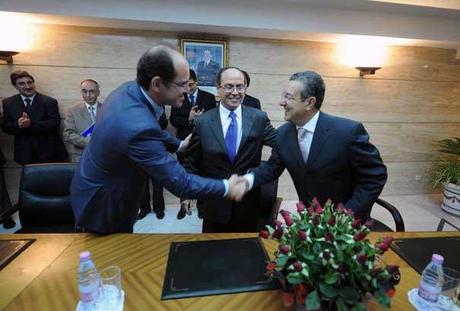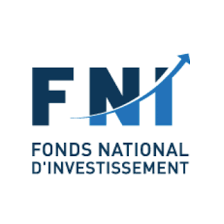Since its creation in 1963, the Institution has had the fundamental mission of contributing to the financing of productive investments, and the implementation of the various investment plans and programs, with a view to achieving the country’s economic development objectives. .
Over the years, the National Investment Fund “FNI” (Ex Caisse Algérienne de Développement “CAD”, Ex Banque Algérienne de Développement “BAD”) has changed its mode of intervention, in order to adapt to the challenges of development of the national economy.
The Institution has known several stages of development linked to the different phases of national economic development.
The years 1963 – 1970
The Institution, was created under the name Caisse Algérienne de Développement “CAD”) by law n° 63-165 of May 7, 1963 and fixing its constitutive statutes.
It constituted the instrument for carrying out the direct intervention of the State in the financing of development from budgetary resources, and as such, it was responsible for both the execution of the investment budget and the management government credits for financing development.
As part of the exercise of its missions, it has also contributed to the creation of public, private and mixed SMEs through equity investments in their capital.
The years 1970 – 1988
The Institution changes its name and becomes Banque Algérienne de Développement “BAD” by virtue of the first article of the ordinance 72-26 of June 07, 1972.
These two decades see the Institution evolve as a major player in the financing planned investments and its action will thus cover three main areas:
Financing of the productive sector: The Institution is responsible for monitoring the execution of the various development plans drawn up by the public authorities while ensuring the long-term financing of the sector productive, from budgetary resources, in the form of “Internal Long-Term Credits” (CILT).
External financing:The call for external assistance has led the Institution to invest heavily in research, implementation and management of diversified external financing from private banking institutions or governmental, regional or multilateral institutions.
This function will soon be extended to management on behalf of the State, by application of intergovernmental agreements.
Public equipment: the Institution ensures the financial management of public equipment operations on the State budget, on final competition, and essentially covers socio-economic, rail, hydraulic, socio-educational infrastructures, etc.
The years 1988 – 1994
From 1986, the launch of economic reforms led the State to undertake a series of actions, including in particular:
The expansion of cooperation with the international monetary institutions IMF, FMA, IBRD …
A gradual withdrawal of the State Direct financing of the productive sector, the withdrawal of the State extending to the sphere of administration and management.
The years 1995 – 1999
December 31, 1994 was in fact set as the final date for the distribution of long-term internal credits “CILT” which continued to be allocated to the productive sector under the term “Program in progress”.
The year 1995 was a pivotal year in the development of the Institution. It marks the end of its intervention in the financing of the productive sector from State budgetary resources.
This event highlighted the urgent need to restructure the bank, to develop its organization in order to allow the emergence or the management of new activities. This period lasted until 2005
The years 1999 – 2009
From 1999, the Institution registered its actions with a view to restructuring and its integration into the national financial and banking system. This period saw the decline of its activity.
A resumption of financing from budgetary resources was noted from 2006 thanks to support programs for economic recovery and financing of investments from Treasury resources.
It undertook, between 2007 and 2008, a process which led to reflection on the need to fundamentally restructure the Institution.
The years 2009 – 2011
In 2009, the FNI-BAD was born, which was endowed with a capital of 150 billion dinars, and its main purpose is to finance the productive economic sector in the form of long-term loans and equity investments. , while continuing to be the financial instrument of the State to administer the assistance granted to finance public equipment operations.
The years 2011 – 2020
In 2011, the name of the Institution changed and became National Investment Fund “FNI”. Thus the FNI accompanies on the one hand the projects of all kinds decided by the State within the framework of the implementation of the plan of consolidation and economic growth 2010-2014, and on the other hand the projects economic activities whose activity would contribute to the growth of non-hydrocarbon exports.
During this period, the FNI intervened by taking stakes, in the social capital for the creation and development of companies, within the framework of the partnership with local and / or foreign investors, such as companies: OTA Djezzy, Renault Algeria Production, Algerian Qatar Steel, AXA Assurances Algeria, TALA Assurances





